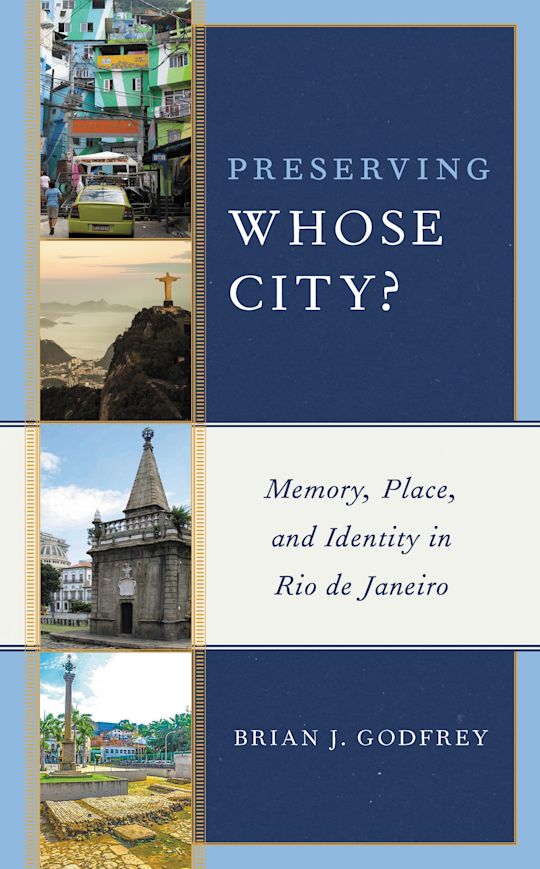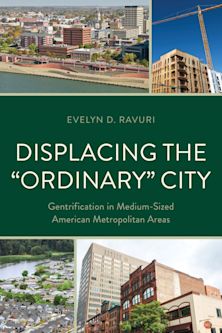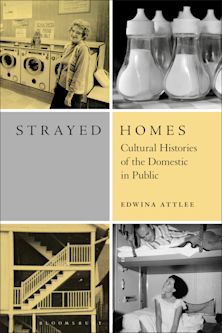Preserving Whose City?
Memory, Place, and Identity in Rio de Janeiro
Preserving Whose City?
Memory, Place, and Identity in Rio de Janeiro
This product is usually dispatched within 1 week
- Delivery and returns info
-
Free US delivery on orders $35 or over
Description
With Brazil’s largest concentration of historic landmarks and famous landscapes, Rio de Janeiro’s passionate heritage debates have helped to define both the city and the country. Taking a critical preservationist stance, Brian Godfrey explores how historic designation and urban rebranding have shaped Rio’s distinctive sense of place.
Official heritage programs date from the 1930s, when federal authorities centralized power and promoted nationalism. The city began a heritage-based strategy of urban revitalization and rebranding in the 1980s––the “Cultural Corridor” of historic places downtown. Subsequent rediscovery of the old “Little Africa” district and continuing struggles of favela communities have emphasized narratives of “counter-memory” against racism, social injustice, and governmental neglect. Meanwhile environmental activism has encouraged programs to conserve the historic landscapes of Rio’s famous mountains, forests, beaches, and bays.
While historic preservation often presumes to conserve or restore heritage sites according to a preexisting authenticity, Godfrey shows how the past actually becomes a resource for present-day interests. Memory brokers have guided the reinvention of historic places, determining whose past has been preserved. Debates over the “right of remembrance,” he argues, shape place memories and identities in this spectacular if highly unequal megacity, which has much to teach the world about conserving cultural diversity and urban environments.
Table of Contents
1 Uses of Memory: Preserving Whose Rio de Janeiro?
Narratives of Historic Placemaking
“Civilizing” Rio through Urban Design
The “Land of the Future” Discovers Its Past
Memory, Preservation, and Heritage
Approaching Place Memory and Identity
2 Preservation Politics: Narrating a City and a Nation
Postcolonial Urbanism in Rio de Janeiro
Entrepreneurial Preservation
November 15th Square: Placemaking on the Praça
Adaptive Reuse of the Imperial Palace
Reinvention and Continuity
3 Little Africa: Afro-Brazilian Heritage and Placemaking
Counter-Memory and Cultural Reinvention
Slave Port and Divided City
Valongo Wharf: Making a World Heritage Site
Little Africa and the African Heritage Circuit
Community Identity and Cultural Politics
4 Resilient Favelas: Pride of Place, Heritage of Resistance
Contested Origins: Invention of the Favela
Favela Expansion, Removal, and Resistance
Favela as Spectacle: “They Don’t Care about Us”
The Rise of “Favela Chic”
Favelas: A New Urbanism?
5 Environmental Heritages: Defending Carioca Landscapes
Carioca Landscapes: Making a World Heritage Site
Tijuca National Park: One Park, Many Symbols
Guanabara Bay: Conservation Turns to Environmental Justice
Copacabana and Ipanema: Democratic Beaches?
Environmental Heritages: Protecting Carioca Landscapes
6 Remembering Rio: The Politics of Memory
Bibliography
Index
About the Author
Product details
| Published | May 03 2021 |
|---|---|
| Format | Hardback |
| Edition | 1st |
| Extent | 252 |
| ISBN | 9781538136546 |
| Imprint | Rowman & Littlefield Publishers |
| Illustrations | 13 b/w illustrations; 12 b/w photos; 5 tables; |
| Dimensions | 9 x 6 inches |
| Publisher | Bloomsbury Publishing |
Reviews

ONLINE RESOURCES
Bloomsbury Collections
This book is available on Bloomsbury Collections where your library has access.


































